Sulphur’s Thom Trahan Is A Historian And A Collector Par Excellence
By Brad Goins
From the moment I met Thom Trahan, his enthusiasm for pop culture was evident. Under his work shirt, Trahan wore a Woody Woodpecker T-shirt. From a pants pocket dangled a child’s action figure of a Star Wars stormtrooper that he had turned into a keychain.
Trahan, who was born and raised in Sulphur, says that much of his impetus for collecting pop culture artifacts grew out of the fact that he had parents who were “younger”; he was “raised on their toys.”
Like many, he collects “things from [his] childhood,” much of which was spent in the 1980s. An obvious focus of attention is the ‘80s children’s cartoon He-Man. He-Man memorabilia pops up in many parts of Trahan’s office at the Brimstone Museum in Sulphur. Trahan notes that each episode of He-Man ended with a moral, such as: if someone tells you something, don’t always believe it. He says that these morals went a long way toward the development of the person he became. He-Man, he says, is “a role model: a big, powerful dude.”
Early on, Trahan’s interests clustered around robots and space. These interests are manifested in his office by a host of toy robots and many pieces of Star Trek memorabilia, including a large-scale model of the Starship Enterprise that sits on a bookshelf loaded with toys, a schematic drawing of the ship that hangs on one wall, and a commemorative plate dominated by a large photograph of the bald-headed Enterprise captain played by Patrick Stewart. Trahan has especially fond memories of this show because he watched it with his father.
The items on display in the office make it clear that Trahan has a keen interest in another pop culture phenomenon. “I’ve always been a Mr. Rogers guy,” he says.
Seated before a Mr. Rogers calendar and a display of Polaroids of the children’s television icon, Trahan relates that when Fred Rogers died, he asked his wife, “Did I do enough?” The fact that a man who so obviously went above and beyond to create a good role model for children should ask whether he had done enough persuaded Trahan that Rogers had been “the perfect Christian.”
Trahan’s fellow IT workers were astonished when the news of Mr. Rogers’ death hit Trahan so hard that he took off work early.
Collections
One eye-catching Trahan collection is made up of celebrity snack trays. He remembers spending Saturday mornings as a child eating cereal on his He-Man tray as he watched cartoons. He looks back with fondness on “a childhood well spent.”
Some of the trays have been given to him by those who know he collects them. He estimates the number of trays in the collection now ranges from 15 to 20. Among those on one office wall is a tray for the old Dukes of Hazzard TV show.

Early in his marriage, Trahan was limited to displaying his collections in a single glass case. He changed the assortment in the case on a weekly basis.
Now, he has worked his way up to having an entire den at his disposal. Among the dozens of articles on display are an animation cell from an old He-Man cartoon that adorns one of the room’s walls.
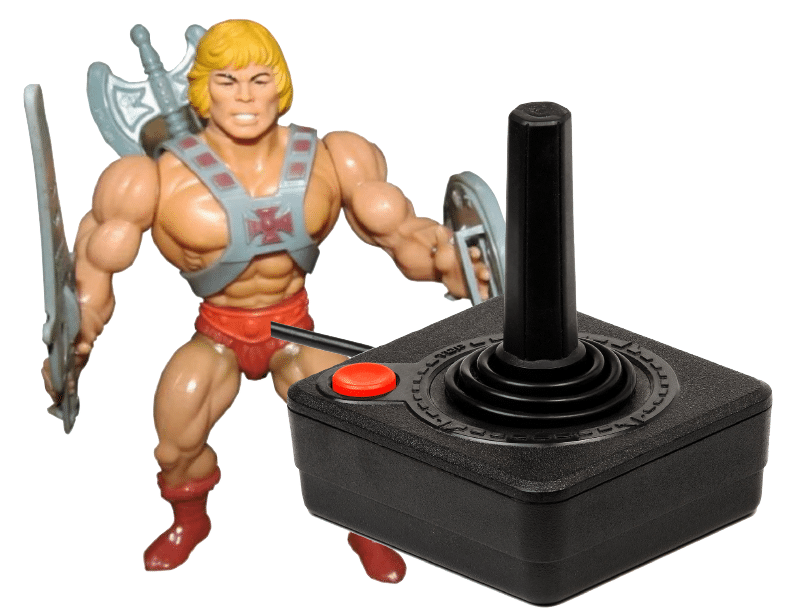
“People leave bags of Smurfs [and other toys]” on the doorknob of his office so that he will find them when he comes in. As a rule, Trahan has no idea who has left the gifts.
Getting Stories From People
As Trahan moved into adulthood, he developed an interest in history. When he studied at Louisiana College in Pineville, he obtained a degree in the subject.
Although Trahan minored in education, he was never to be a teacher in a classroom. After graduation, he worked two years as an IT consultant. And then he went through a stint doing hotel work.
He found “working in tourism” fascinating and discovered that tourism had an intriguing system of economics. “People from out of town come and dump money in your community.” He especially enjoyed hearing the wildly diverse stories told by the guests who came and went at the hotels.
Trahan soon applied for an opening as assistant director of the Brimstone Museum in Sulphur. After a year of serving in that position, he moved up to the post of executive director.
“I fell in love with archives,” he says, “old photos, old books.”
Trahan feels that part of his job is to “share stories and get stories from people.” He says that the toys, action figures and posters in his office that relate to Star Trek, Quantum Leap and dozens of other pop culture phenomena act as a “trigger” to get guests to talk about their childhood experiences.
Projects
Trahan says that the purpose of the Brimstone Museum is “to preserve and enrich the history and culture of Southwest Louisiana.” He says that at present, the museum exhibits are largely dedicated to the history of Sulphur’s businesses and industries, and in particular such landmark industries as the mining of sulfur and the development of Citgo. He implies that Sulphur scientist Herman Frasch’s invention of a process that pumped super-heated water deep underground so that it liquified sulfur and forced it to shoot up through the surface is under-appreciated. “It was a world-changing process,” says Trahan.
In front of today’s Brimstone Museum there sits a 4 feet by 4 feet cube of sulfur (pictured below). Trahan says that the cube is what remains of a ton of sulfur that was reduced to its relatively small size by the effects of exposure. The cube provides a good example of what the liquified sulfur looked like after it shot out of the ground then gradually cooled into a solid.
In addition to providing many displays on sulfur mining and the Sulphur Mines Village, the museum also chronicles the stories of the hospital, schools, churches and other buildings that were central to the city’s social and cultural life.
Trahan often feels as if the bulk of Sulphur’s population “is unaware of what we’re doing as a whole.” The museum sponsors programs, including educational programs; houses exhibits; and offers field trips. It is working on the present revitalization of Sulphur’s downtown, which is being redesigned to make it more walkable.
The Brimstone Museum recently added a major, large-scale model train layout with miniature replicas of most of Sulphur’s historical buildings.
The museum often partners with Sulphur’s Henning Cultural Center on art exhibits. The Cultural Center occupies one of the four buildings that share a large lot with the museum at 909 S. Huntington St. The site is variously called the Brimstone Museum and Henning Cultural Center or the Brimstone Museum Complex.
A favorite exhibit of Trahan is the annual show devoted to pop culture — Chaos Theory. Artists from the area are invited to create art about pop culture. And some individuals bring pop cultural artifacts to the display.
Although Trahan is fond of the pop culture of the 1980s because it reminds him of his childhood, he admits that he also likes the “tackiness and gaudiness of the ‘80s.” Last year, the pop culture exhibit at Henning featured a “bedroom from the 1980s.” Furniture from the decade was bought at thrift stores. And 1980s memorabilia from Trahan and two other collectors covered the walls and filled the shelves of bookcases.
The audience response was enthusiastic. Trahan remembers a number of photo shoots of people dressed in 1980s gear. He got many requests from patrons who wanted the bedroom to include 1990s artifacts in the next exhibit. They, too, want to be reminded of their childhood.
A Love Letter To AstroWorld
Trahan is especially enthusiastic about an upcoming exhibit devoted to the once-popular Houston theme park AstroWorld. This exhibit will be large enough to occupy two floors.
The park closed in 2005; the Brimstone and Henning exhibit will commemorate the 15th anniversary of the closing. The exhibit will be titled “A Love Letter to AstroWorld.” Says Trahan, “We’re very excited about that.”
The Museum and Cultural Center will seek works from artists who went to the park as children or as parents of children. (Guidelines for art works can be found at Brimstonemuseum.org.)
Organizers are hoping to create a display of photographs that local families took during their visits to the theme park. Any who have such photos are invited to bring them in.
After the exhibit, panels on AstroWorld will become part of the Brimstone Museum’s permanent display.
Snippets Of Sulphur History
The Brimstone Museum was established in 1974. Then, as now, it resides in the building that was constructed in 1915 to serve as Sulphur’s Southern Pacific Railway Depot.
The Railroad Depot was initially relocated to Frasch Park. In 2002, as the result of an effort spearheaded by Jason Barnes, the depot moved to its present location.
Do people in Sulphur know the history of their town? I asked Trahan. “It’s getting better,” he says. “When I started, it wasn’t all that great.”
Over the years, the history and culture complex has grown from two buildings to five.
The Museum is a nonprofit 501(c)(3). As director, Trahan often works in collaboration with Sulphur Parks and Recreation and the city’s Police Jury. He has “a lot of freedom.” For instance, the cultural complex is given complete control of the curation and jurying of art shows.
As for the Museum itself, the massive train set that is now its centerpiece is guaranteed to remain on display for at least six more years. It features miniature replicas of such Sulphur landmarks as the Strand Theatre and the KELB radio station. A depiction of an enormous sulfur deposit shows the way in which the huge mounds of sulfur dwarfed the miners who worked on them.
Walking through the museum and looking at the many informative placards on the walls, one will see references to fascinating (but largely forgotten) snippets of Sulphur history. During my interview with Trahan, I intended to ask him whether the hurricane of 1918, which devestated downtown Lake Charles, had affected Sulphur. In the course of my walk through the museum, I noticed that Sulphur experienced two highly destructive events in 1918: first, a fire that ravaged the downtown; second, a massive cyclone that knocked down most of the Sulphur businesses at the time. (The cyclone was, in fact, part of what was called the Louisiana Hurricane of 1918 — a huge weather event that left 34 people dead.)
The AstroWorld exhibit will be remarkable. It will be one of the relatively rare events for which Trahan will be able to combine his love of history and his enthusiasm for pop culture. One hopes to see more and more popular culture artifacts appear in the Brimstone Museum’s permanent collection as time goes by.



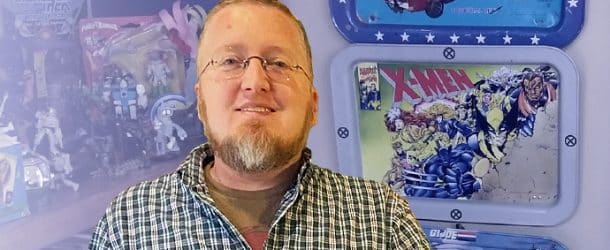
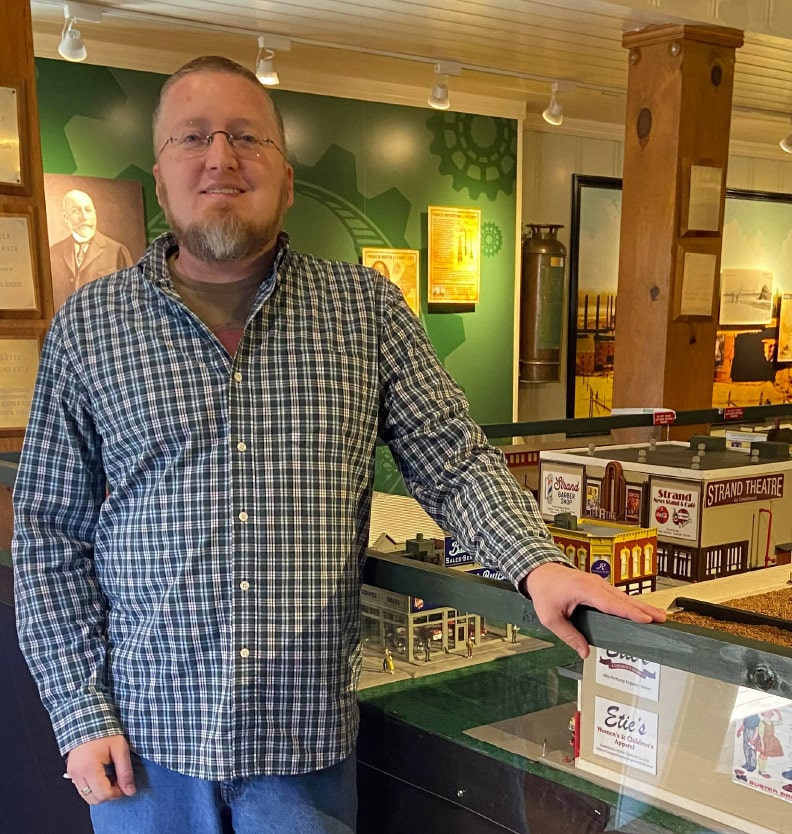
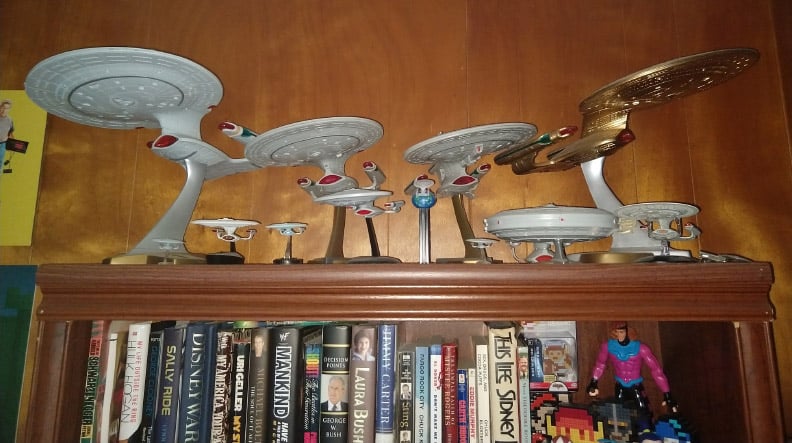
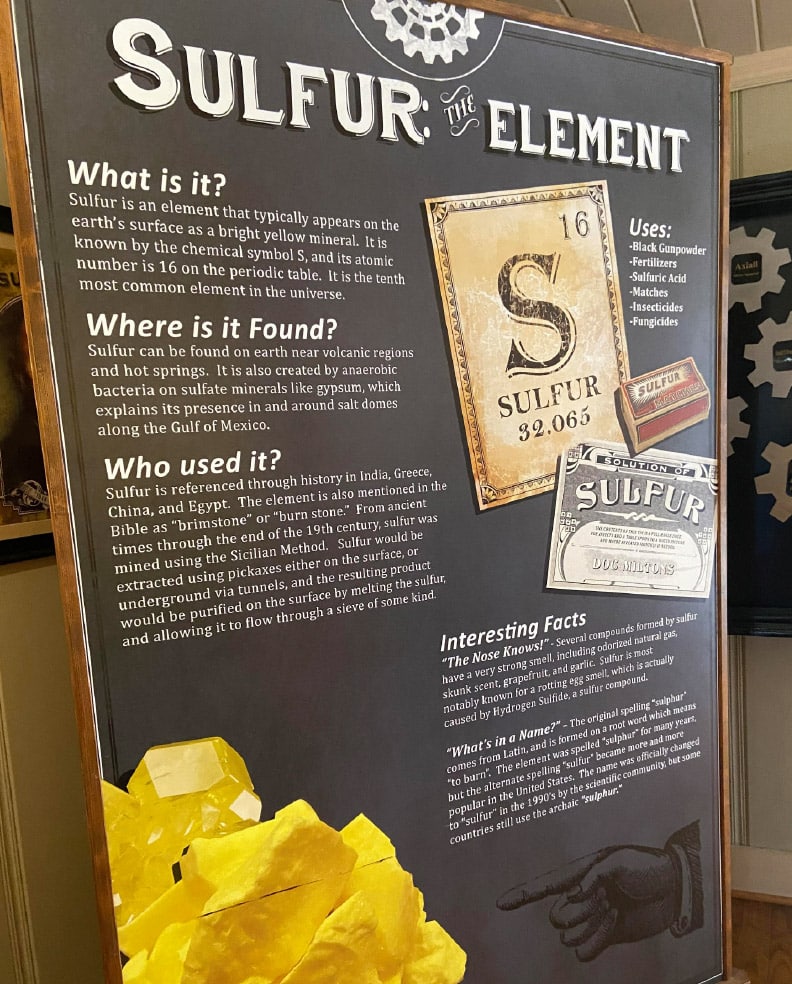
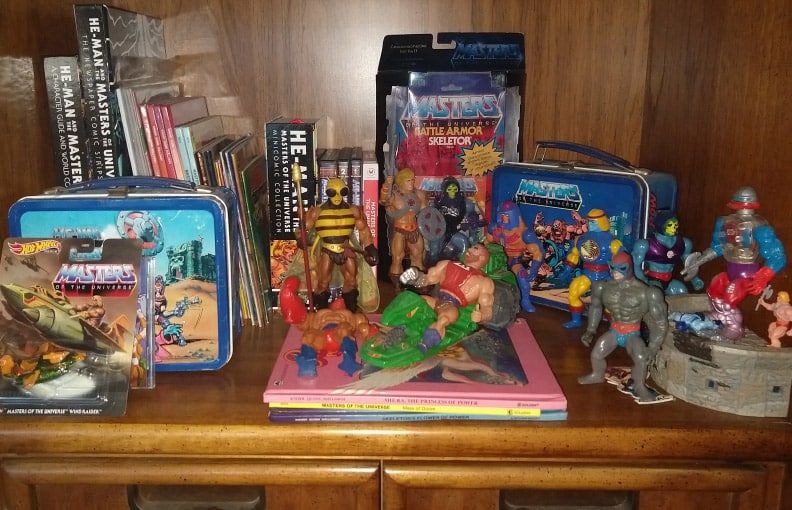
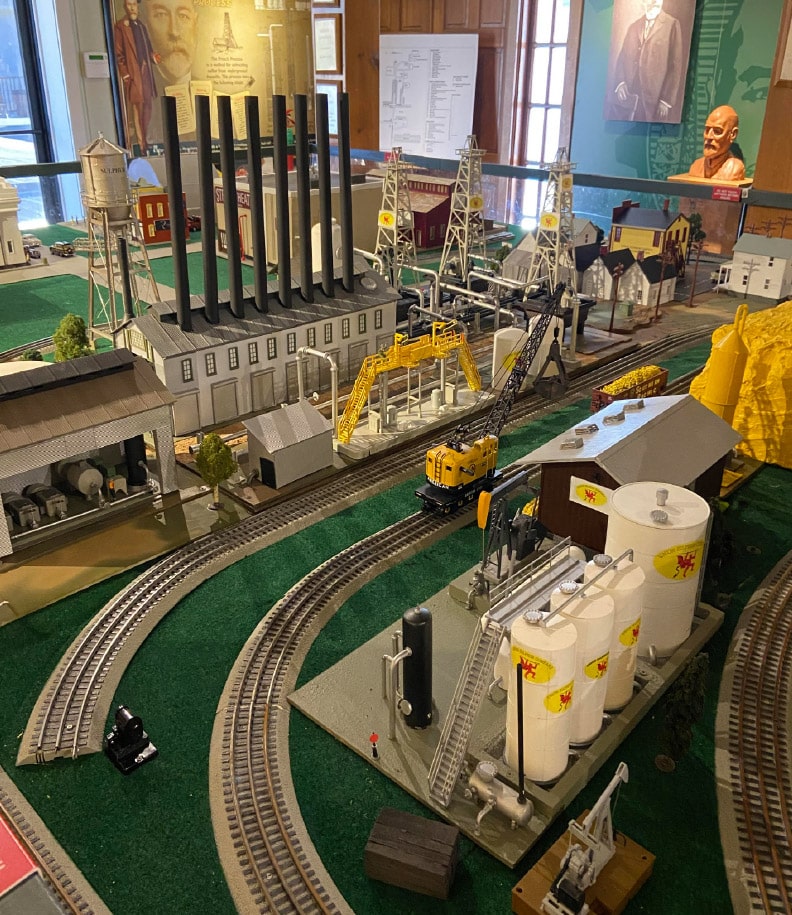
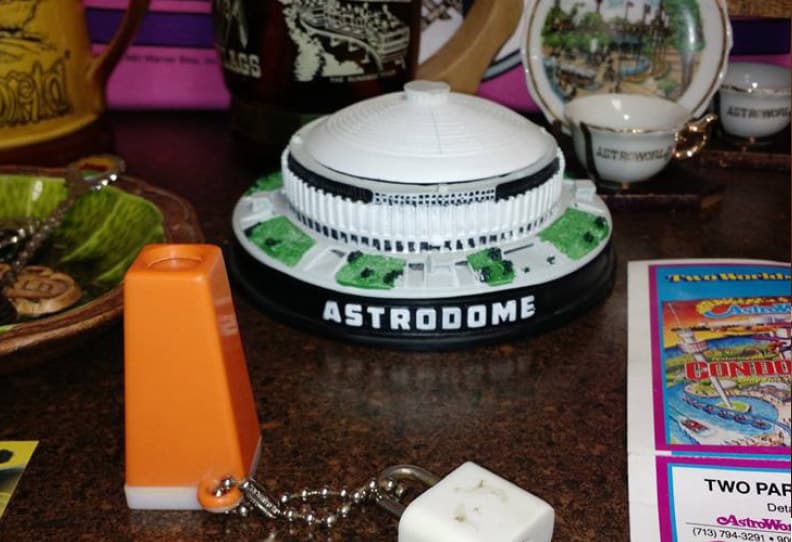














Comments are closed.